Abstract
An outbreak of meningococcal disease occurred among basic combat trainees at Fort Lewis, Wash., in the first 3 months of 1971. After five recruits developed meningitis within a 2-week period, 8,721 recruits were given 100 mg of minocycline every 12 hr for 5 days. No new cases of meningococcal disease occurred for almost 5 weeks. Then six additional cases occurred among recruits who had entered training after the initial course of minocycline and who had not received the drug. Minocycline was given to all 6,130 of these men, and again occurrence of new cases was halted abruptly. One week later, group C polysaccharide vaccine was administered to all recruits in the first 6 weeks of training and subsequently to all new entering trainees. No new cases of meningitis occurred in the next 3 months. Surveys showed that minocycline significantly lowered the meningococcal carrier rate for 4 to 5 weeks. No strains of Neisseria meningitidis, among 341 isolated after minocycline treatment, were resistant to the drug. Prophylaxis with minocycline clearly interrupted the course of this outbreak due to sulfa-resistant meningococci. Although immunization is the preferred method of prophylaxis, minocycline may be useful until a suitable polyvalent vaccine is available.
Full text
PDF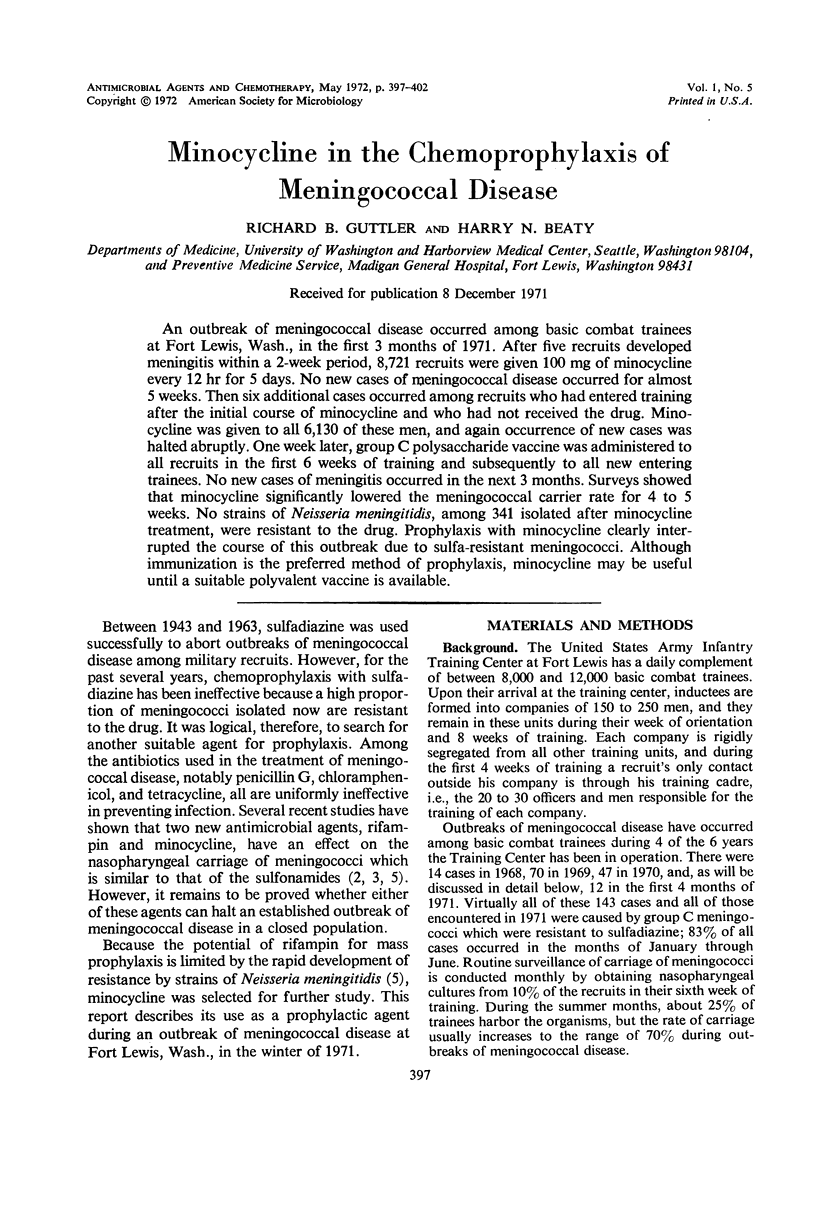
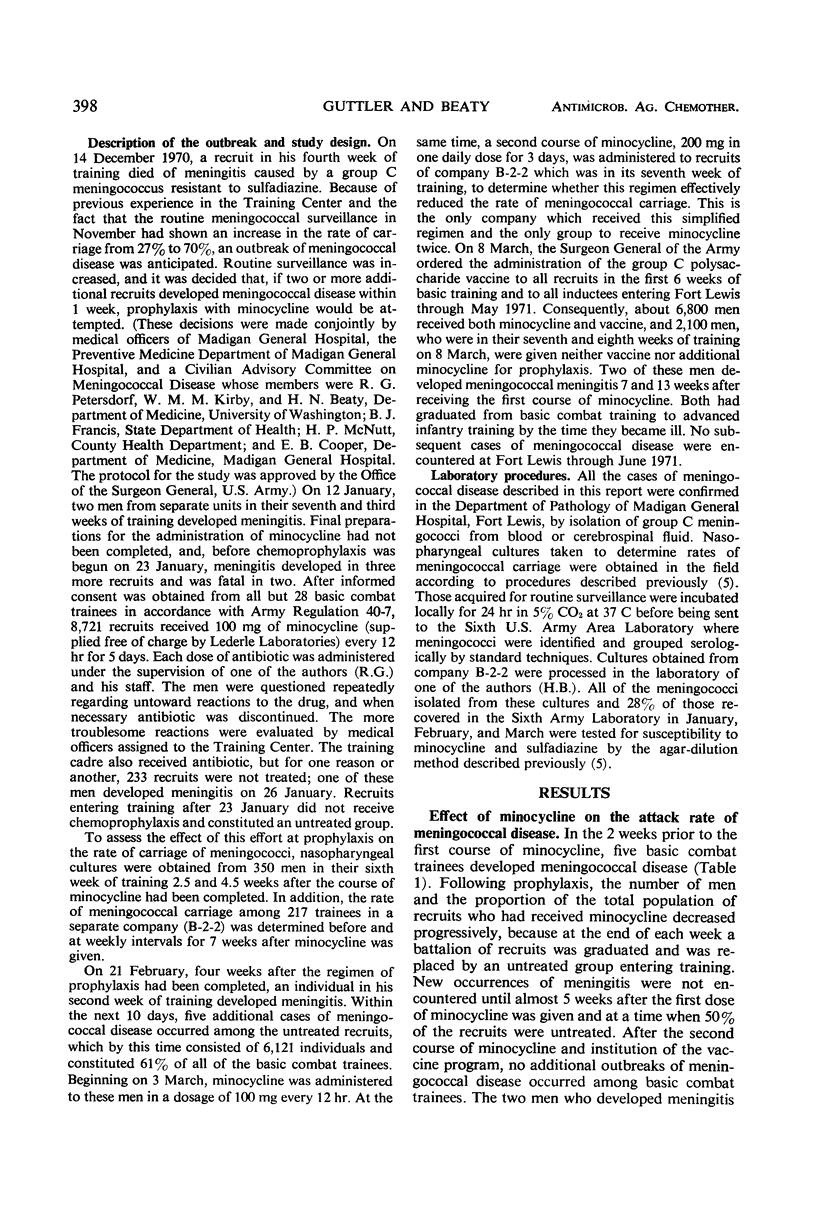
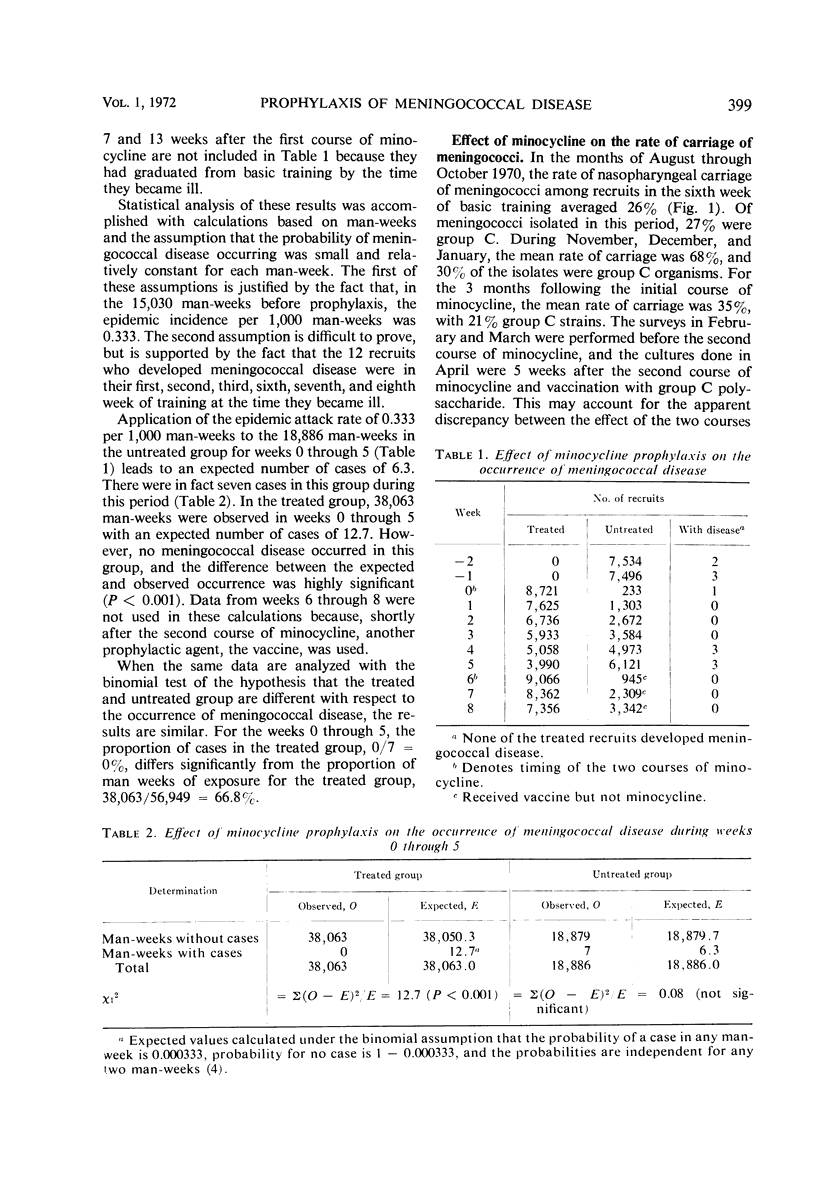
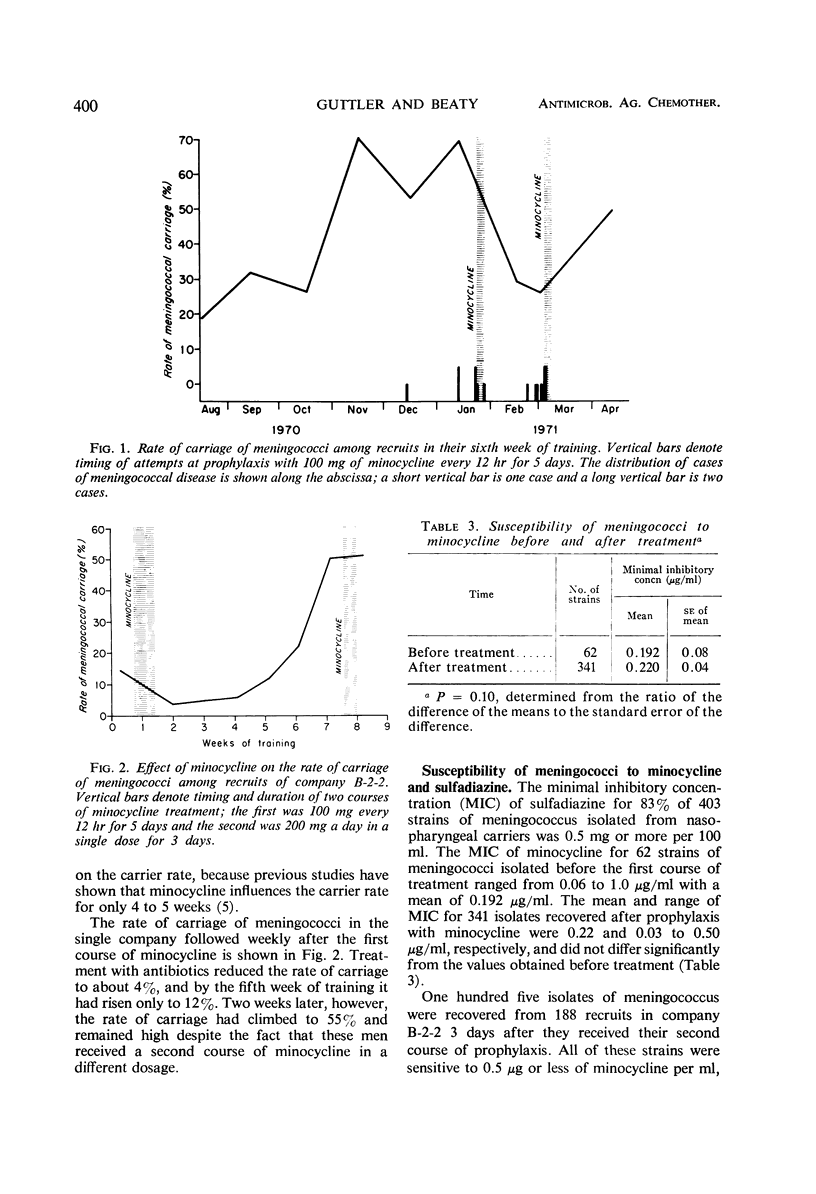
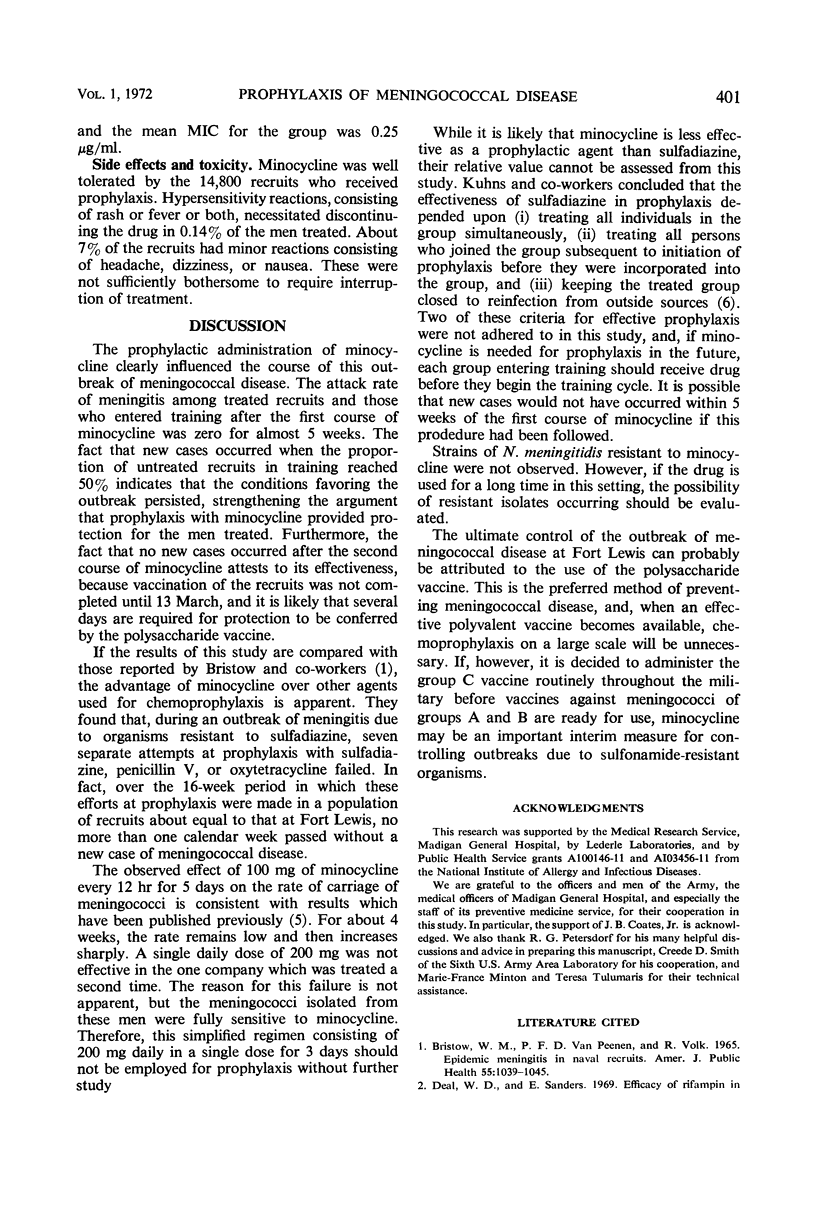
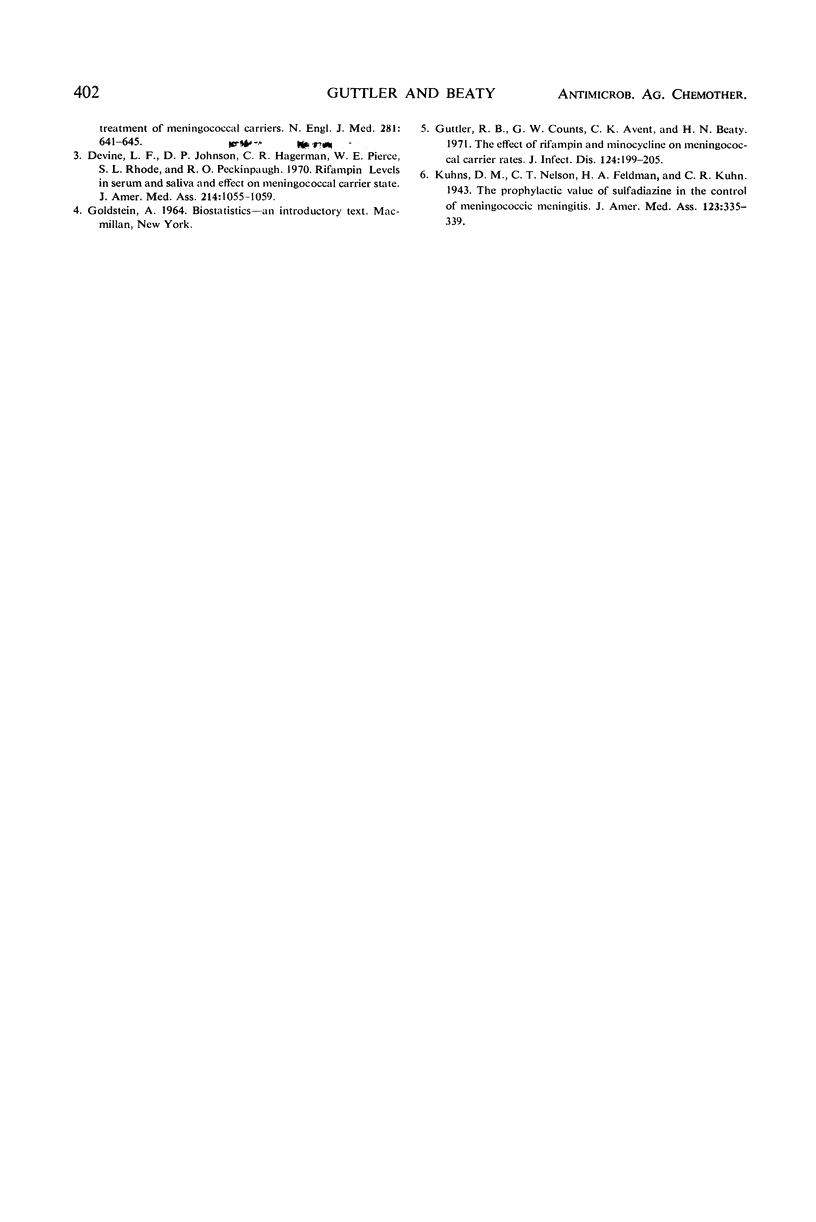
Selected References
These references are in PubMed. This may not be the complete list of references from this article.
- BRISTOW W. M., VANPEENEN P. F., VOLK R. EPIDEMIC MENINGITIS IN NAVAL RECRUITS. Am J Public Health Nations Health. 1965 Jul;55:1039–1045. doi: 10.2105/ajph.55.7.1039. [DOI] [PMC free article] [PubMed] [Google Scholar]
- Devine L. F., Johnson D. P., Hagerman C. R., Pierce W. E., Rhode S. L., 3rd, Peckinpaugh R. O. Rifampin. Levels in serum and saliva and effect on the meningococcal carrier state. JAMA. 1970 Nov 9;214(6):1055–1059. doi: 10.1001/jama.214.6.1055. [DOI] [PubMed] [Google Scholar]
- Guttler R. B., Counts G. W., Avent C. K., Beaty H. N. Effect of rifampin and minocycline on meningococcal carrier rates. J Infect Dis. 1971 Aug;124(2):199–205. doi: 10.1093/infdis/124.2.199. [DOI] [PubMed] [Google Scholar]


